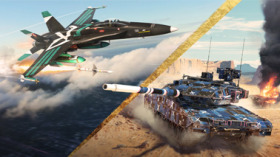
- For PC
- For MAC
- For Linux
- OS: Windows 10 (64 bit)
- Processor: Dual-Core 2.2 GHz
- Memory: 4GB
- Video Card: DirectX 11 level video card: AMD Radeon 77XX / NVIDIA GeForce GTX 660. The minimum supported resolution for the game is 720p.
- Network: Broadband Internet connection
- Hard Drive: 22.1 GB (Minimal client)
- OS: Windows 10/11 (64 bit)
- Processor: Intel Core i5 or Ryzen 5 3600 and better
- Memory: 16 GB and more
- Video Card: DirectX 11 level video card or higher and drivers: Nvidia GeForce 1060 and higher, Radeon RX 570 and higher
- Network: Broadband Internet connection
- Hard Drive: 62.2 GB (Full client)
- OS: Mac OS Big Sur 11.0 or newer
- Processor: Core i5, minimum 2.2GHz (Intel Xeon is not supported)
- Memory: 6 GB
- Video Card: Intel Iris Pro 5200 (Mac), or analog from AMD/Nvidia for Mac. Minimum supported resolution for the game is 720p with Metal support.
- Network: Broadband Internet connection
- Hard Drive: 22.1 GB (Minimal client)
- OS: Mac OS Big Sur 11.0 or newer
- Processor: Core i7 (Intel Xeon is not supported)
- Memory: 8 GB
- Video Card: Radeon Vega II or higher with Metal support.
- Network: Broadband Internet connection
- Hard Drive: 62.2 GB (Full client)
- OS: Most modern 64bit Linux distributions
- Processor: Dual-Core 2.4 GHz
- Memory: 4 GB
- Video Card: NVIDIA 660 with latest proprietary drivers (not older than 6 months) / similar AMD with latest proprietary drivers (not older than 6 months; the minimum supported resolution for the game is 720p) with Vulkan support.
- Network: Broadband Internet connection
- Hard Drive: 22.1 GB (Minimal client)
- OS: Ubuntu 20.04 64bit
- Processor: Intel Core i7
- Memory: 16 GB
- Video Card: NVIDIA 1060 with latest proprietary drivers (not older than 6 months) / similar AMD (Radeon RX 570) with latest proprietary drivers (not older than 6 months) with Vulkan support.
- Network: Broadband Internet connection
- Hard Drive: 62.2 GB (Full client)
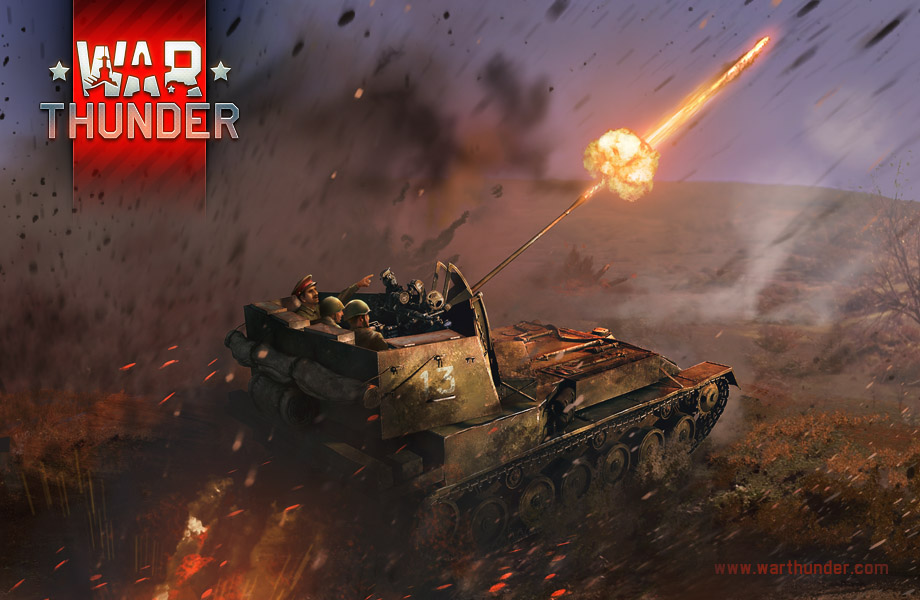
From 12.00 GMT on October 17 to 12.00 GMT on October 20
Join the 'Rapid Fire' (+20% RP & SL) Arcade-Event!
Fight in this Arcade Battle in AA vehicles and destroy enemies
to call-in air support through mini-events!
Participating vehicles are:
Flakpanzer I Ausf. A, Sd.Kfz. 6/2, Wirbelwind, Ostwind, 72-K GAZ MM, ZSU-37 and ZUT-37!
The self-propelled anti-aircraft that participated in World War II, were designed for the air defense of military units and strategic targets. In contrast to the stationary versions of anti-aircraft artillery, the AA was mounted on wheels, half-tracked or a fully tracked chassis. During the fighting, it became clear that the deployment of anti-aircraft guns on an open road chassis, deprived of the defenses, led to their rapid destruction. From that point on, armoured AA based series of tanks and self-propelled guns were developed.
In War Thunder there is a wide range of self-propelled anti-aircraft artillery giving the opportunity to protect an armoured column and stationary ground targets from attack fighters and bombers. The game uses different types of AA: from prototypes to production vehicles. This greatly increases the informative part of the game, allowing players in War Thunder to encounter various models of military equipment from the participating countries of the Second World War.
A distinctive feature of the AA from those times is their scarcity, which indicates that the issues of air defense were assigned mainly to fixed or towed anti-aircraft guns (and is also a reason why we decided to introduce prototype AA vehicles). Because of the high losses in armoured vehicles and motor vehicles mass production of specialized equipment was a luxury.
The most famous of this class of machines were the ZSU-37 and the German “Ostwind” and “Wirbelwind”.
In War Thunder, the AA given in Soviet ground vehicles has such types as: 72-K GAZ MM, ZSU-37 and the ZUT-37. German AA models presented include: Flakpanzer I Ausf. A, Sd.Kfz. 6/2, “Wirbelwind”, “Ostwind”, “Kugelblitz”.
72-K GAZ MM
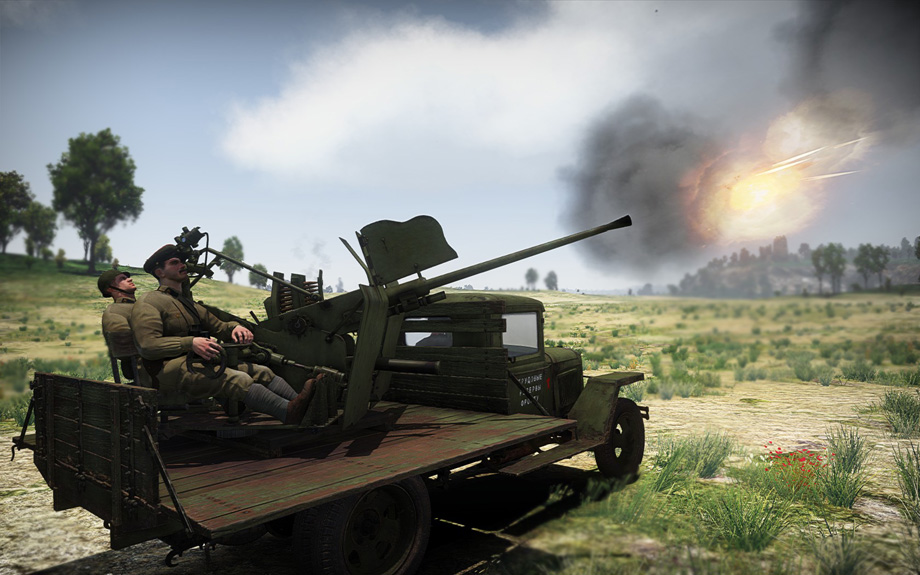 |
A 25mm anti-aircraft gun, the 72-K, developed in 1939-1940, was very common, and 4860 units were produced. It occupies an intermediate position between large-calibre anti-aircraft machine guns of the ANC and the more powerful 37mm anti-aircraft guns of the 61-K, this vehicle was designed for Infantry Regiment level air defense.
To increase mobility in the second half of 1941, the 72-K anti-aircraft machine was installed on the chassis of the GAZ-MM. Tests showed the success of the design and the gun mount so it was put into serial production. However, only 200 units were produced, as the manufacturer’s factory, Kolomna Locomotive Works, was evacuated. Subsequently, the 72-K GAZ-MM was no longer produced.
ZSU-37
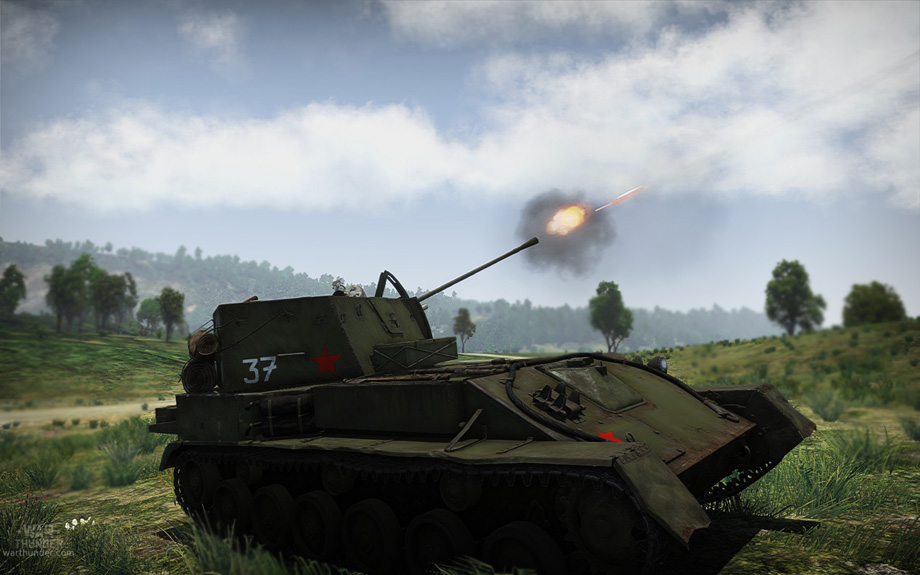 |
The Anti-aircraft gun the 61-K, 37-mm calibre, represented the first high-volume anti-aircraft gun, developed on the basis of 40-mm cannon “Bofors” and produced to the amount of nearly 19,000 pieces. It was this cannon that was equipped with the first Soviet serial propelled anti-aircraft gun on the tracked ZSU-37.
Developed based on the ACS-76M, the ZSU-37 was perfect for the protection of mobile units to attack enemy aircraft. Various modifications of the system were produced from 1944 to 1946. Was built only 75 ZSU-37.
ZUT-37
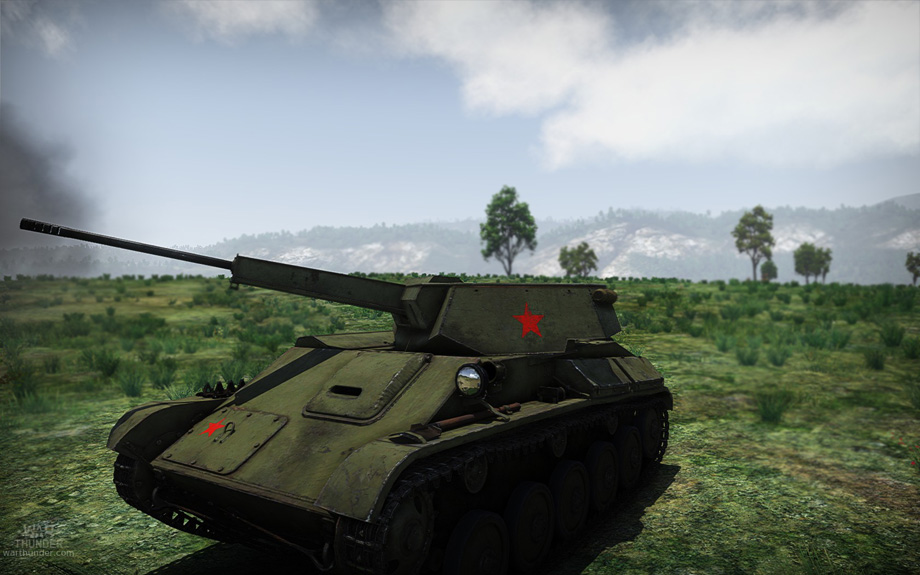 |
Two years earlier, in the summer of 1942, the design bureau at plant №37, an attempt was made to create an anti-aircraft tank. N.A. Popov had based it on the light tank T-70 which was supposed to mount a 37-mm gun - the W-37, constructed by B.G. Shpitalny. The Muzzle velocity of the gun was 1000 m/s with 200 rounds stored.
The ZUT-37 was capable of firing both at air and ground targets. For this tank was equipped with telescopic sights and red dot sighting. When moving the gun traversed on two special racks. The vehicle was not put into production because of the unfortunate arrangement of the crew compartment.
Sd.Kfz. 6/2 with 37 mm Flak 36
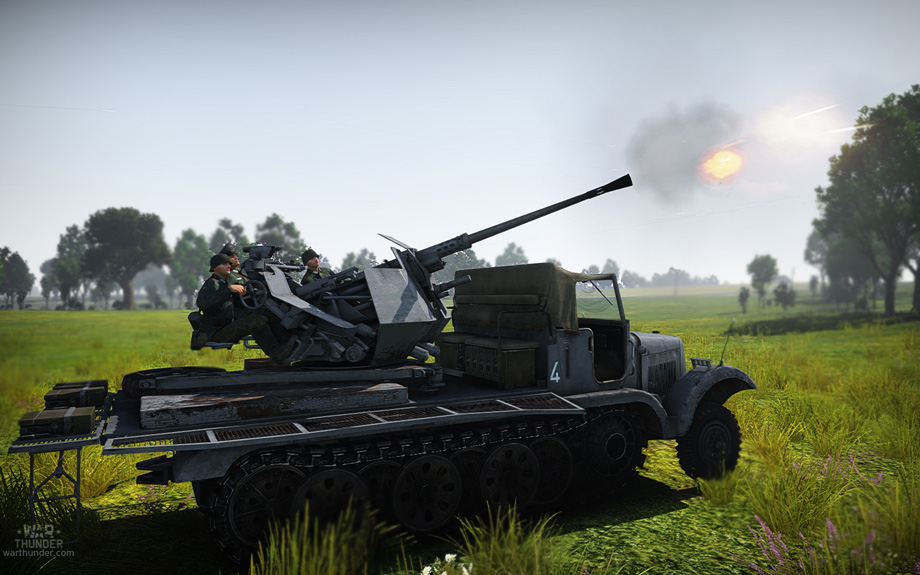 |
The AA vehicle Sd.Kfz.6/2, was a modification of the Sd.Kfz.6 multipurpose halftrack, it was equipped with a 37 mm Flak 36 anti aircraft gun, which was designed by Rheinmetall in 1936.
The Sd.Kfz. 6/2 was able to fire at both ground and air targets. Effective shooting at air targets was carried out at a distance of up to 4800 m. When firing at ground targets, the anti-aircraft gun was capable of penetrating up to 36 mm of armor at 100 m and 24 mm at 800 m. The rate of fire of the 37 mm Flak 36 was 120 rounds per minute and 339 vehicles were produced in total.
Flakpanzer IV “Wirbelwind”
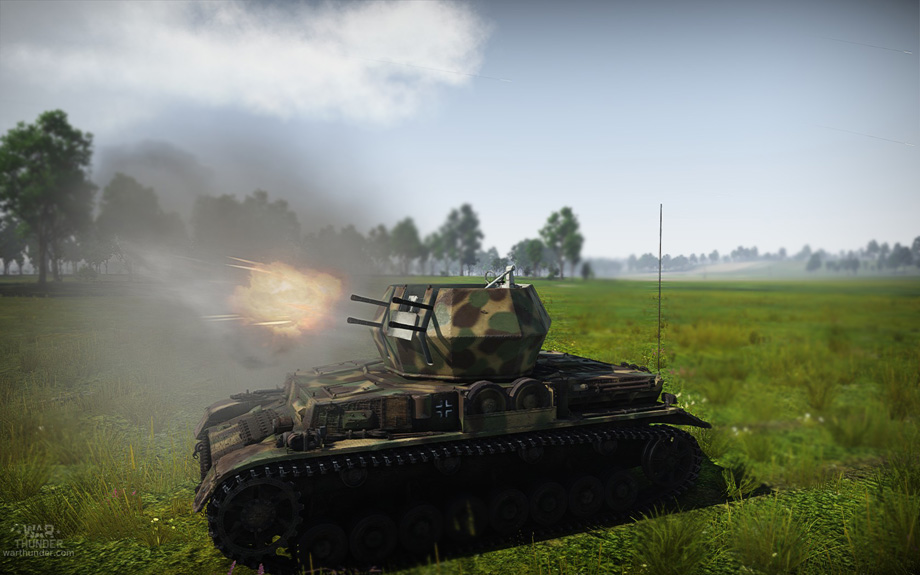 |
With a rigged nonahedric (nine-sided) open turret featuring four 20 mm Flak 38 L/65 anti-aircraft cannons in a quad mount, the AA tank “Wirbelwind” was developed based on the concept proposed by officers of the SS-Panzerdivision “Hitlerjugend”, as the need of tank units for a mobile air defense was very high.
The Flakpanzer “Wirbelwind” was based on the Pz.Kpfw. IV medium tank and assembled in the Ostbauwerke in Sagan. 90 of the 106 self-propelled anti-aircraft vehicles that were produced were sent to the Eastern Front.
A number of suggestions were made to modify the “Wirbelwind” to increase combat effectiveness, but the German war industry could not cope with the needs of the fronts and all further projects were disbanded.
Flakpanzer IV “Ostwind”
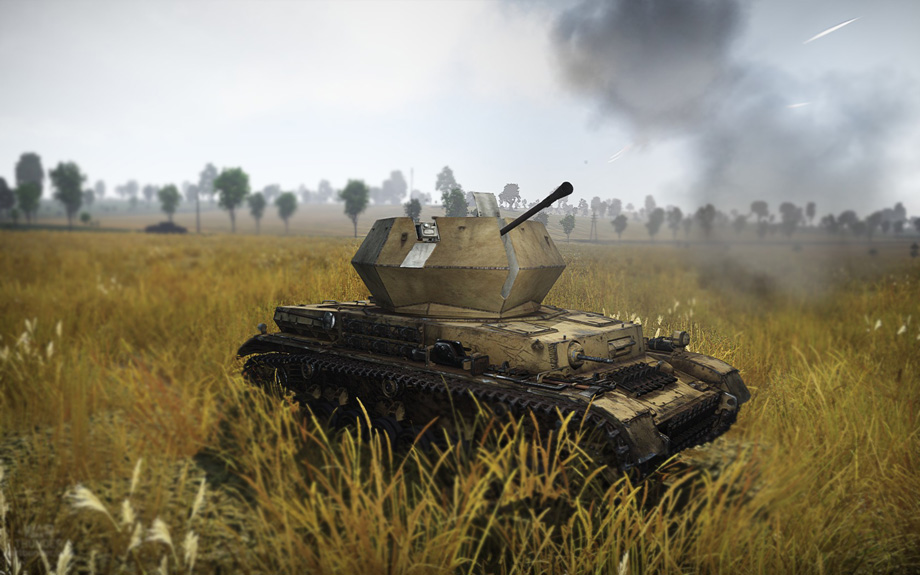 |
The Flakpanzer IV “Ostwind” anti-aircraft tank was the logical follow-up project of the “Wirbelwind” AA tank and was also based on the chassis of the Pz.Kpfw. IV, it was equipped with a 37 mm Flak 43 anti-aircraft cannon. Developed in 1944 the “Ostwind” was not only capable of shooting down aircraft, but could also be used against non-armoured targets and weak fortifications.
The main difference to the “Wirbelwind” was the change of armament to a single 37 mm Flak 43 anti-aircraft cannon, in which process the nonahedral turret was replaced with a hexagonal one. Compared to its predecessor, the “Ostwind” could engage enemies at greater distances, had increased armour and was equipped with two additional MG 34 machine guns.
By intention, the turret was supposed to be closed but due to the high amount of smoke being produced by the weapon, the engineers could not find a ventilation solution so it was kept open. 45 units were built in total.
Flakpanzer IV “Kugelblitz”
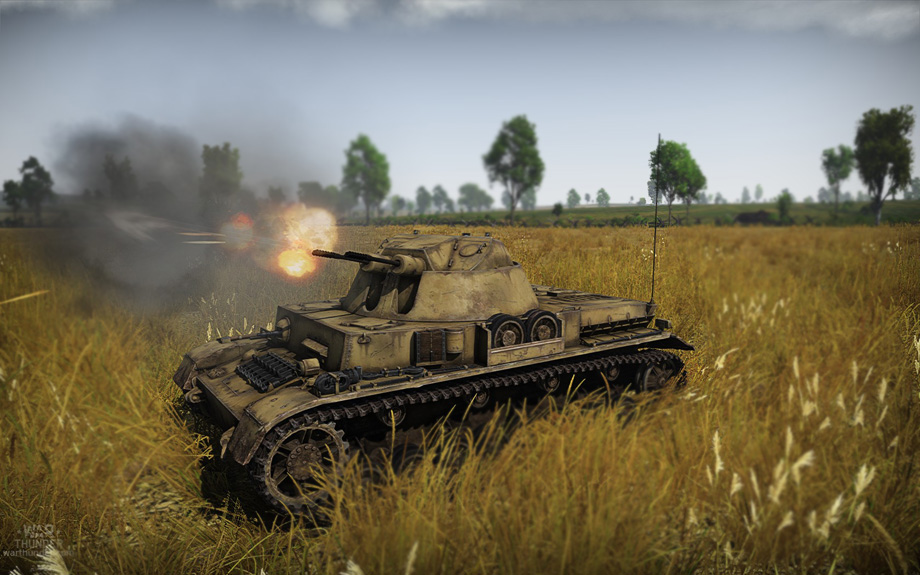 |
The Flakpanzer IV “Kugelblitz" was equipped with two 30 mm MK 103 aircraft guns in a twin mount and was developed by Daimler-Benz in 1944 on the basis of the Pz.Kpfw. IV chassis.
Planned for a start in autumn of 1944, the mass production of the “Kugelblitz” was disrupted only due to the inability of supplying the designated factories with the needed components. German industry was at that time experiencing serious supply problems and only managed to build three models that did not see actual combat.
The War Thunder Team


